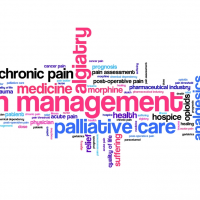A Guide to Hospice Terminology

Like any other industry, hospice and palliative care have their own set of special terms and jargon. Although these terms can be confusing, they aren’t meant to be. It’s important to remember that it’s okay to ask questions if you don’t understand what a term means. You should never feel embarrassed about asking a hospice employee for clarification, it’s normal to experience a little confusion. To help you understand some of these terms, we put together a list of a few commonly used hospice terms.
Apnea- This condition causes a patient to stop breathing for short periods of time. The gap between breaths could be between 10 and 60 seconds.
Buccal- Medication placed on the inside of the cheek.
Bereavement- Grief counseling made available to the family of the deceased loved one. This program will be available for 13 months after the loved one dies.
Continuous/concentrated Care- The level of care provided when the patient’s symptoms are not under control. Nurses can be assigned to the patient’s bedside for eight-hour shifts.
Dysphagia- A condition when the patient has difficulty swallowing.
GIP- This stands for general inpatient care, which is the level of care provided when the patient requires hospitalization.
IDT- An interdisciplinary team is made up of nurses, volunteers, social workers, doctors, CNAs, health aids, and a few more depending on the circumstances.
Mottling- When the skin turns a bluish color due to poor circulation.
Palliative Care- When the patient is no longer trying to cure the sickness. Instead, treatment is focused on making the patient comfortable.
Recertification- A written notice from a certified doctor that the patient still qualifies for hospice benefits.
Respite Stay- A five-day period that is used to give rest to the patient and caregiver. These are awarded on a case-by-case basis and can only be used once every 30 days.
Transdermal Patch- A small patched adhered to the skin of the patient that gives a controlled release of medication.
There are plenty more hospice terms, but this is a good start. If you have questions about hospice care or a hospice term please reach out and we’d be happy to speak with you.